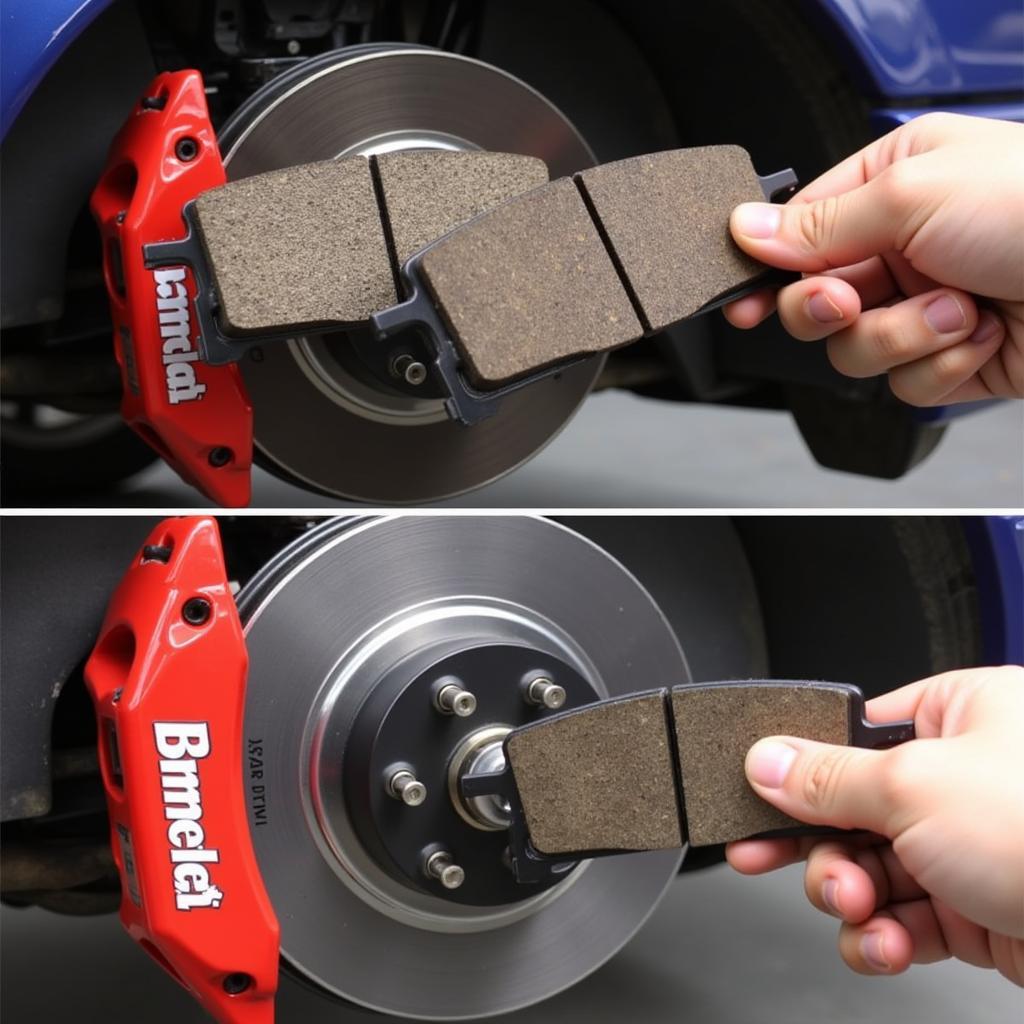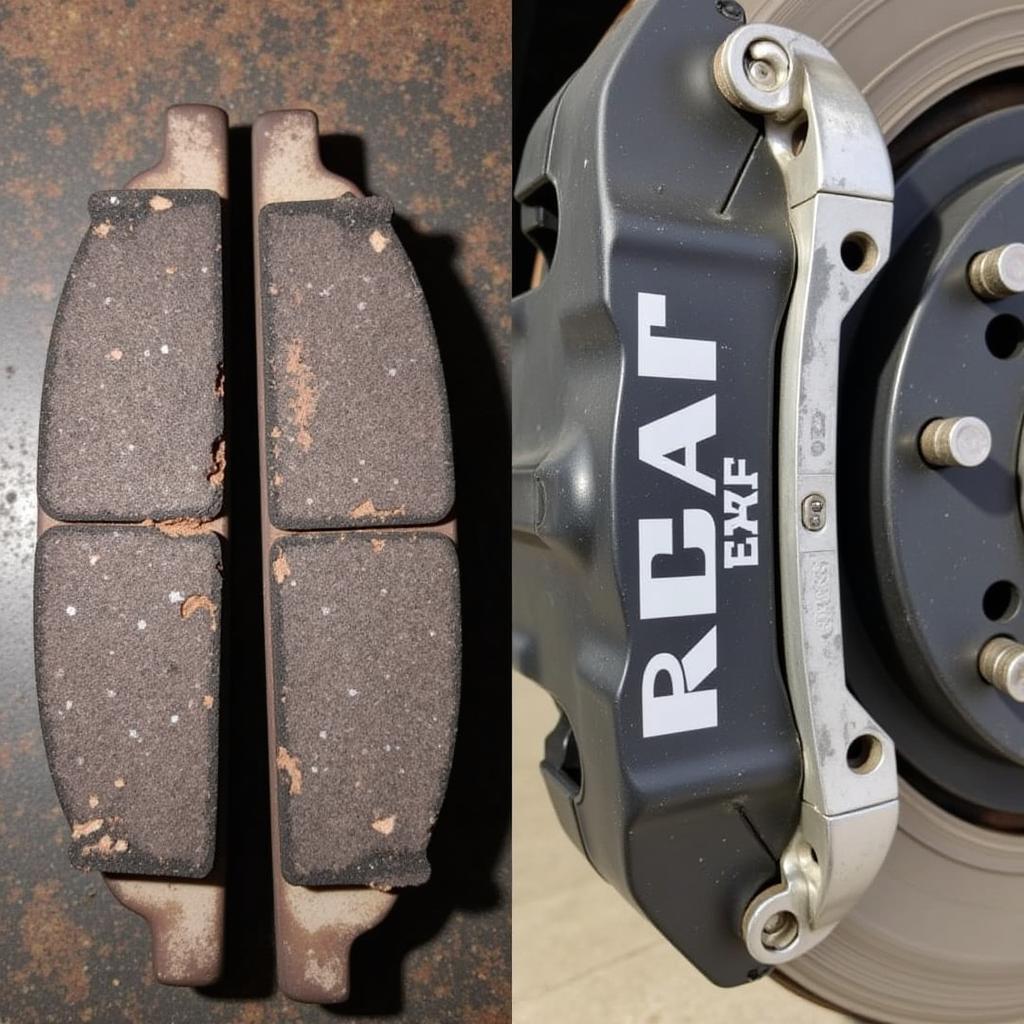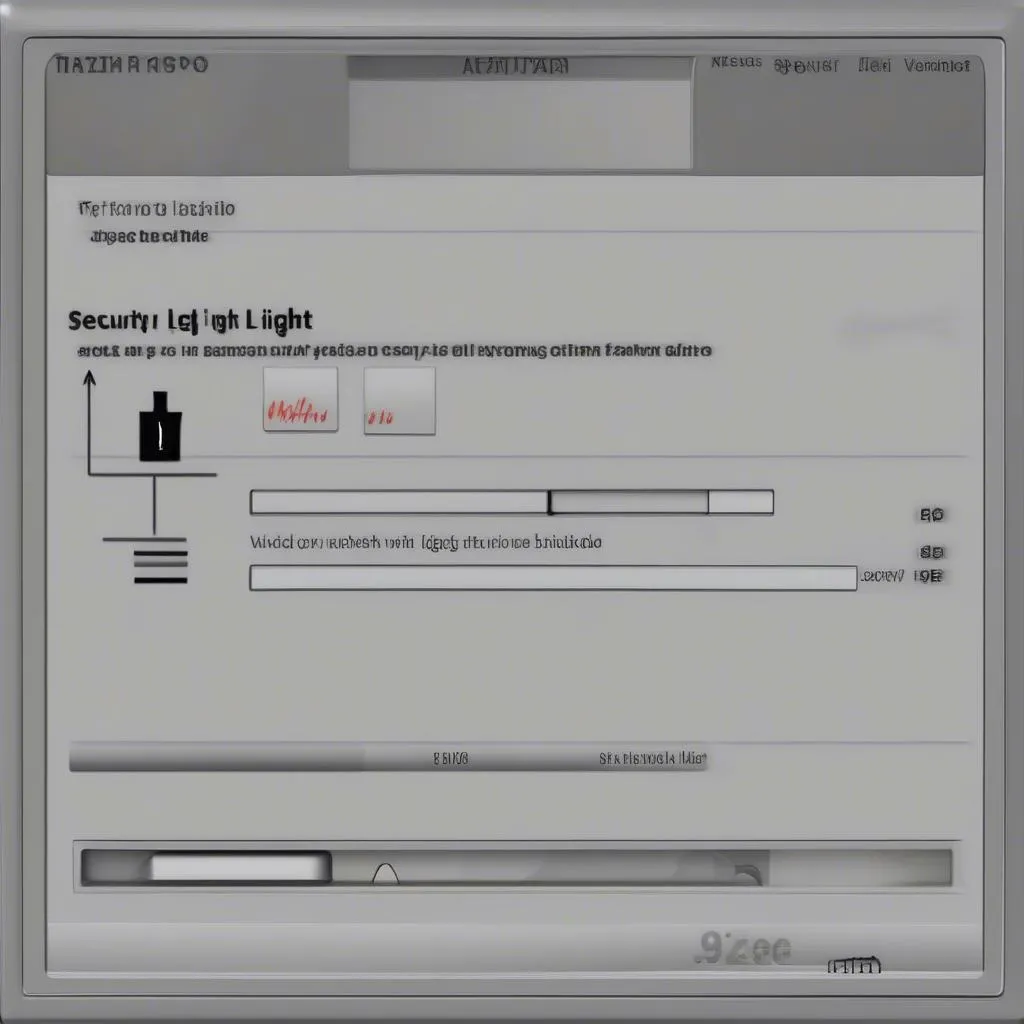That annoying little light on your dashboard, the brake pad warning light, is staring you in the face in your beloved BMW E30. Don’t panic! This guide will walk you through everything you need to know about that BMW E30 brake pad warning light, from why it’s illuminated to how you can address the underlying issue.
Understanding Your BMW E30’s Brake Pad Warning System
The brake pad warning light is a crucial safety feature in your E30. It’s designed to alert you when your brake pads are wearing thin and need replacing. Ignoring this warning can lead to reduced braking performance and potentially dangerous driving situations. This system isn’t just a suggestion; it’s a vital component of your vehicle’s safety.
How the Brake Pad Warning Light Works
Your E30 utilizes a simple yet effective system to monitor brake pad wear. A small sensor, embedded within the brake pad material, triggers the warning light when the pad reaches a predetermined minimum thickness. This sensor is typically a wire loop that completes a circuit when the brake pad is new. As the pad wears down, the wire eventually breaks, interrupting the circuit and illuminating the warning light on your dashboard.
Common Causes of the Brake Pad Warning Light
While worn brake pads are the most common culprit, there are other potential causes for the warning light. A faulty sensor, damaged wiring, or even low brake fluid levels can trigger the light. Diagnosing the precise cause is essential to ensure you’re addressing the correct issue.
Diagnosing Your BMW E30 Brake Pad Warning Light
Before rushing to replace your brake pads, it’s important to confirm the diagnosis. Here’s a step-by-step guide to help you pinpoint the problem:
-
Visual Inspection: Start by visually inspecting your brake pads. Remove the wheel and look through the caliper to gauge the thickness of the brake pad material. If the pads are visibly thin, they likely need replacing.
-
Check the Sensor: Inspect the brake pad wear sensor for any signs of damage or disconnection. A broken wire or a disconnected connector can trigger the warning light even if the pads are still good.
-
Brake Fluid Level: Low brake fluid can also trigger the warning light. Check the brake fluid reservoir and top it off if necessary. If the fluid level drops quickly, you may have a leak in your brake system, requiring immediate attention.
Resolving the Brake Pad Warning Light Issue
Once you’ve identified the cause, addressing the issue is usually straightforward.
Replacing Brake Pads
If your brake pads are worn, replacing them is a relatively simple DIY task. You’ll need new brake pads, a jack, and some basic hand tools. Numerous online resources and videos can guide you through the process. Always follow the manufacturer’s recommendations for the correct brake pad type for your E30.
Replacing the Sensor
If the sensor is faulty, replacing it is a quick and inexpensive fix. The sensor is typically attached to the brake pad and can be easily replaced along with the pads.
Addressing Other Issues
If the problem isn’t worn pads or a faulty sensor, you’ll need to investigate further. A professional mechanic can diagnose and repair any issues with your brake system, such as leaks or damaged wiring.
“Regular brake system maintenance is crucial for safety,” says Jake Miller, a seasoned automotive technician specializing in European vehicles. “Don’t ignore that warning light. It’s there for a reason.”
BMW E30 Brake Pad Warning Light: FAQs
-
How often should I check my brake pads? It’s recommended to visually inspect your brake pads every 10,000 miles or at least once a year.
-
Can I drive with the brake pad warning light on? While you can technically drive a short distance, it’s not recommended. Driving with worn brake pads can significantly reduce braking performance and put you at risk.
-
How much does it cost to replace brake pads on a BMW E30? The cost varies depending on the type of brake pads and whether you do the work yourself or hire a mechanic. DIY brake pad replacement typically costs between $50 and $100.
-
What are the symptoms of worn brake pads? Besides the warning light, other symptoms include squealing or grinding noises, a spongy brake pedal, and increased stopping distance.
 New Brake Pads Installed on a BMW E30
New Brake Pads Installed on a BMW E30
Conclusion
The BMW E30 brake pad warning light is a crucial safety feature that shouldn’t be ignored. By understanding how the system works and following the diagnostic steps outlined above, you can quickly address any issues and ensure your E30’s braking system is in top condition. Addressing this warning light promptly will keep your classic BMW running smoothly and, most importantly, keep you safe on the road. Remember, regular maintenance is key to a long and happy life for your E30.



